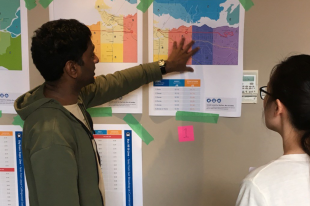Blog by Julia Powles and Helen Nissenbaum: “Serious thinkers in academia and business have swarmed to the A.I. bias problem, eager to tweak and improve the data and algorithms that drive artificial intelligence. They’ve latched onto fairness as the objective, obsessing over competing constructs of the term that can be rendered in measurable, mathematical form. If the hunt for a science of computational fairness was restricted to engineers, it would be one thing. But given our contemporary exaltation and deference to technologists, it has limited the entire imagination of ethics, law, and the media as well.
There are three problems with this focus on A.I. bias. The first is that addressing bias as a computational problem obscures its root causes. Bias is a social problem, and seeking to solve it within the logic of automation is always going to be inadequate.
Second, even apparent success in tackling bias can have perverse consequences. Take the example of a facial recognition system that works poorly on women of color because of the group’s underrepresentation both in the training data and among system designers. Alleviating this problem by seeking to “equalize” representation merely co-opts designers in perfecting vast instruments of surveillance and classification.
When underlying systemic issues remain fundamentally untouched, the bias fighters simply render humans more machine readable, exposing minorities in particular to additional harms.
Third — and most dangerous and urgent of all — is the way in which the seductive controversy of A.I. bias, and the false allure of “solving” it, detracts from bigger, more pressing questions. Bias is real, but it’s also a captivating diversion.
What has been remarkably underappreciated is the key interdependence of the twin stories of A.I. inevitability and A.I. bias. Against the corporate projection of an otherwise sunny horizon of unstoppable A.I. integration, recognizing and acknowledging bias can be seen as a strategic concession — one that subdues the scale of the challenge. Bias, like job losses and safety hazards, becomes part of the grand bargain of innovation.
The reality that bias is primarily a social problem and cannot be fully solved technically becomes a strength, rather than a weakness, for the inevitability narrative. It flips the script. It absorbs and regularizes the classification practices and underlying systems of inequality perpetuated by automation, allowing relative increases in “fairness” to be claimed as victories — even if all that is being done is to slice, dice, and redistribute the makeup of those negatively affected by actuarial decision-making.
In short, the preoccupation with narrow computational puzzles distracts us from the far more important issue of the colossal asymmetry between societal cost and private gain in the rollout of automated systems. It also denies us the possibility of asking: Should we be building these systems at all?…(More)”.

